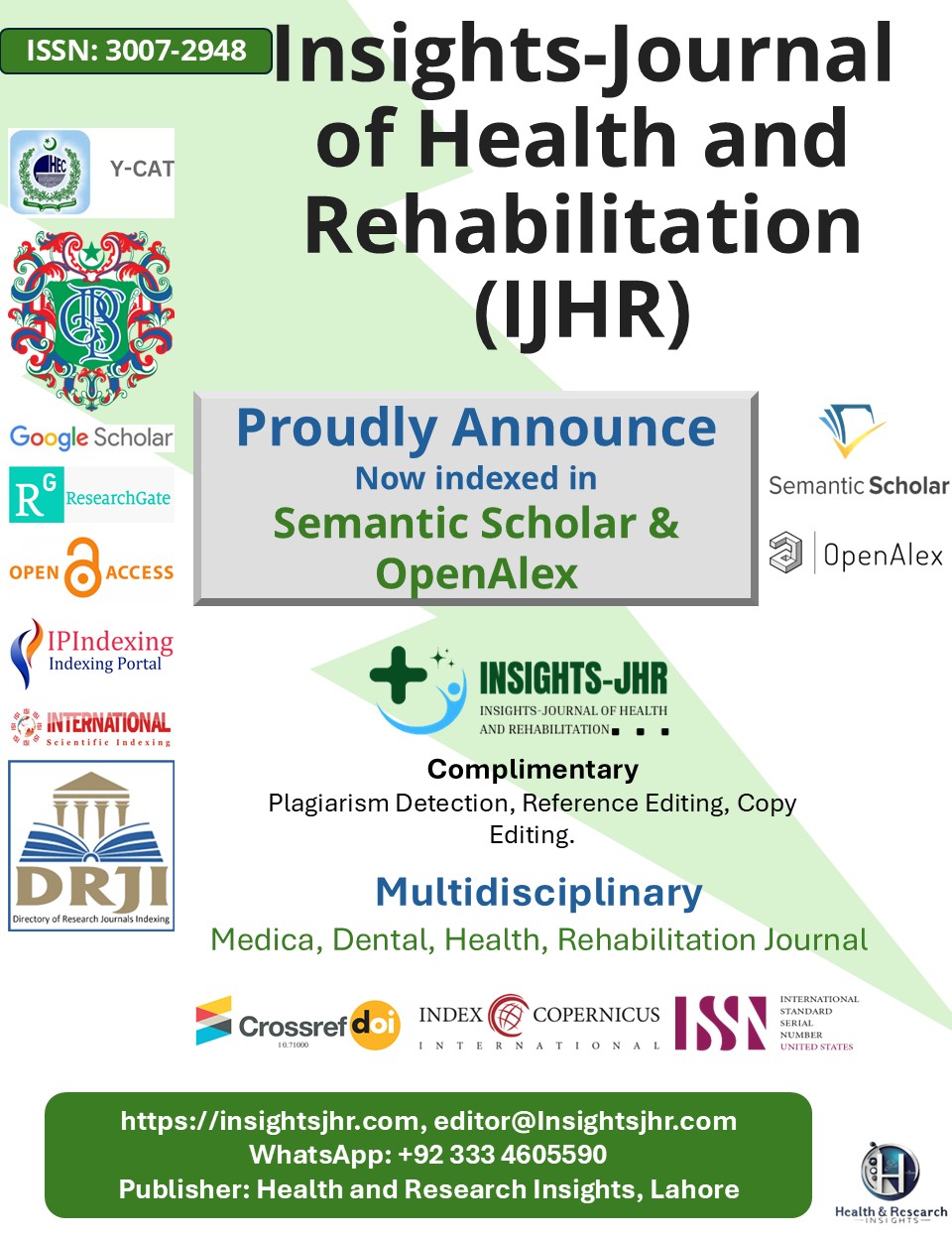EVALUATION OF PRESCRIPTION ERRORS IN CASE PEPTIC ULCER DISEASE IN DIFFERENT HEALTH CARE FACILITIES OF RAWALAKOT AZAD KASHMIR, PAKISTAN
DOI:
https://doi.org/10.71000/cf4eef48Keywords:
proton pump inhibitors (PPIs), , Anti-Ulcer Agents, Diagnosis, Differential, Drug Prescriptions, Helicobacter Infections, Non-Steroidal Anti-Inflammatory Agents, , Peptic UlcerAbstract
Background: Peptic ulcer disease (PUD) is a common gastrointestinal condition arising from an imbalance between aggressive factors such as gastric acid and pepsin, and mucosal defense mechanisms. Helicobacter pylori infection and the chronic use of non-steroidal anti-inflammatory drugs (NSAIDs) are the leading etiological agents. If left untreated, PUD can result in serious complications including gastrointestinal bleeding, perforation, and gastric outlet obstruction. Appropriate diagnosis and rational prescribing are essential for effective disease management.
Objective: To evaluate prescription errors associated with peptic ulcer disease in Rawalakot, Azad Jammu and Kashmir, and to identify gaps in clinical documentation and drug therapy management.
Methods: This descriptive, cross-sectional study was conducted across multiple healthcare settings in Rawalakot, including CMH outpatient departments, private clinics, and pharmacies. Prescriptions were collected from patients aged 20 to 80 years diagnosed with PUD. A total of 200 prescriptions were gathered, from which 100 prescriptions specific to peptic ulcer disease were purposively selected for analysis. Each prescription was assessed using Medscape software to identify errors in dose, drug strength, frequency, duration, diagnostic test recommendations, and differential diagnosis documentation.
Results: Among the 100 prescriptions analyzed, errors were most prevalent in differential diagnosis (67%), followed by drug frequency (57%), duration of therapy (55%), diagnostic testing (63%), drug strength (44%), and dosage (30%). Only 33% of prescriptions accurately differentiated between gastric and duodenal ulcers, while 43% properly stated frequency and 45% correctly documented therapy duration. Just 56% had accurate drug strength, and 70% of doses were appropriate.
Conclusion: The findings highlight widespread prescription errors in the management of PUD, especially in diagnostic clarity and treatment planning. Enhanced prescriber education, pharmacist involvement, and standardized prescription protocols are recommended to improve patient safety and treatment outcomes.
Downloads
Published
Issue
Section
License
Copyright (c) 2025 Musaffa Niaz, Khan Bilal Imtiaz, Seemab Altaf, Zunash Ishaq, Muhammad Usman Khan, Jawad Zahir, Izhar Ullah (Author)

This work is licensed under a Creative Commons Attribution-NonCommercial-NoDerivatives 4.0 International License.







